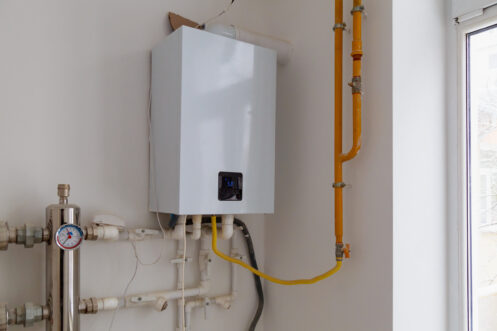Making Sure Durability of Your Home's Hot Water System: Care Tips
Making Sure Durability of Your Home's Hot Water System: Care Tips
Blog Article
The content in the next paragraphs about How to Maintain Your Water Heater & Prolong its Life is exceptionally fascinating. Read on and make your own personal findings.

Hot water is vital for daily convenience, whether it's for a rejuvenating shower or washing dishes. To guarantee your warm water system runs effectively and lasts longer, normal upkeep is essential. This article supplies functional pointers and insights on just how to preserve your home's warm water system to prevent disruptions and expensive repair services.
Introduction
Preserving your home's hot water system may seem overwhelming, however with a few simple steps, you can guarantee it operates efficiently for years ahead. This guide covers every little thing from comprehending your warm water system to DIY upkeep pointers and knowing when to call expert help.
Value of Maintaining Your Warm Water System
Normal upkeep not just extends the lifespan of your hot water system yet also ensures it runs efficiently. Ignoring upkeep can result in lowered efficiency, higher power costs, and also premature failure of the system.
Signs Your Warm Water System Needs Upkeep
Recognizing when your hot water system needs focus can stop significant issues. Watch out for indicators such as inconsistent water temperature, odd sounds from the heating unit, or rustic water.
Understanding Your Hot Water System
Prior to diving right into upkeep tasks, it's handy to understand the basic parts of your hot water system. Normally, this consists of the water heater itself, pipelines, anode poles, and temperature level controls.
Monthly Maintenance Tasks
Routine regular monthly checks can assist capture minor issues before they intensify.
Flushing the Water Heater
Purging your hot water heater gets rid of sediment buildup, improving efficiency and extending its life.
Checking and Replacing Anode Rods
Anode rods protect against deterioration inside the container. Inspecting and replacing them when worn out is essential.
Examining and Changing Temperature Level Setups
Changing the temperature settings guarantees optimal efficiency and safety and security.
DIY Tips for Upkeep
You can execute numerous upkeep tasks yourself to keep your warm water system in leading condition.
Checking for Leaks
Routinely inspect pipelines and links for leakages, as these can bring about water damages and higher bills.
Testing Pressure Relief Valves
Examining the stress safety valve ensures it functions appropriately and stops extreme pressure buildup.
Insulating Pipelines
Shielding warm water pipes reduces warmth loss and can save energy.
When to Call a Professional
While do it yourself maintenance is advantageous, some concerns need professional proficiency.
Facility Concerns Requiring Specialist Assistance
Examples consist of major leakages, electrical troubles, or if your water heater is consistently underperforming.
Regular Professional Upkeep Conveniences
Expert maintenance can include detailed assessments, tune-ups, and ensuring conformity with security criteria.
Final thought
Routine upkeep of your home's hot water system is essential for effectiveness, longevity, and expense savings. By adhering to these suggestions and recognizing when to seek specialist assistance, you can make certain a reputable supply of hot water without unanticipated disruptions.
How to Maintain an Instant Hot Water Heater
Before tinkering with your hot water heater, make sure that it’s not powered on. You also have to turn off the main circuit breaker and shut off the main gas line to prevent accidents. Also turn off the water valves connected to your unit to prevent water from flowing into and out of the appliance. 2. When you’re done, you have to detach the purge valves’ caps. These look like the letter “T†and are situated on either side of the water valves. Doing so will release any pressure that has accumulated inside the valves while at the same time avoid hot water from shooting out and burning your skin. 3. When the purge valves’ caps are removed, you have to connect your hosing lines to the valves. Your unit should have come with three hoses but if it didn’t, you can purchase these things from any hardware or home repair shops. You can also get them from retail stores that sell water heating systems. Read the user’s manual and follow it to complete this task properly. When the hosing lines are connected, open the purge port’s valves. 4. You should never use harsh chemical cleaners or solutions when cleaning your unit. Make use of white vinegar instead. It should be undiluted and you’ll probably use about 2 gallons. 5. Now flush your water heater. This task should probably take about 40 minutes. We can’t give you specific directions for this because the procedure is carried out depending on the type, model and brand of your heater. With that being said, refer to the user’s manual. 6. When you’re done draining the unit, you have to turn off the purge port valves again. Remove the hosing lines that you earlier installed on each of the water valves. Put the valve caps (purge port) back in their respective places and be very careful so as not to damage the rubber discs that are found inside these caps. 7. Now that everything’s back in place, check your user’s manual again to find out how to reactivate your water heating system. 8. Once it is working, turn one of your hot water faucets on just to let air pass through the heater’s water supply pipes. Leave the tap on until water flows smoothly out of it. https://www.orrplumbing.com/blog/2014/september/how-to-maintain-an-instant-hot-water-heater/

I stumbled upon that blog posting about What Kind of Maintenance Do Water Heaters Need? when looking around the search engines. Sharing is caring. Helping others is fun. I thank you for reading our article about Water Heater Maintenance Tips You Can't Afford to Forget.
Additional Information Report this page